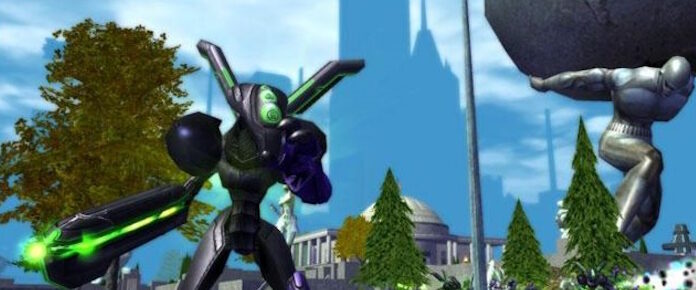
StarCraft II ranks very highly on my list of my favourite games of all time, but while it remains popular, it is in maintenance mode, and its days are slowly waning. Fortunately, there seems to be a growing movement of spiritual successors that aim to carry the RTS torch and bring SC2‘s legacy into the future.
So far, I’ve found three games that seem intended as director successors to StarCraft II. All feature asymmetrical factions, colourful Blizzard-style graphics, and a mix of single-player, co-operative, and PvP content. It’s too early to say for sure which is the best heir to the StarCraft legacy, but we can make some early observations.
Stormgate
Stormgate is by far the clear frontrunner to be the next big RTS, but it’s also increasingly the one I find myself least hyped for.
Its developer, Frost Giant Studios, is crewed by a number of ex-Blizzard employees (notably including Kevin “Monk” Dong, the well-regarded former co-op missions lead), and by its pedigree alone it would be seem to be the heir apparent to StarCraft II.
What little we’ve seen of it so far does look like a well-made game. It’s appears very polished (for a game in alpha) and seems to have learned well the lessons of past Blizzard RTS games. It’s very similar to SC2, but just a little bit slower paced so as to be more approachable. SC2‘s breakneck pace and unforgiving combat lethality made for excellent esports moments, but they also turned off casual players and made the game more stressful than it needed to be.
But – and this is going to be subjective, so I can only speak for myself – it is lacking one crucial thing its predecessors had: the cool factor. I look at Stormgate, and nothing about its world or its aesthetic appeals to me.
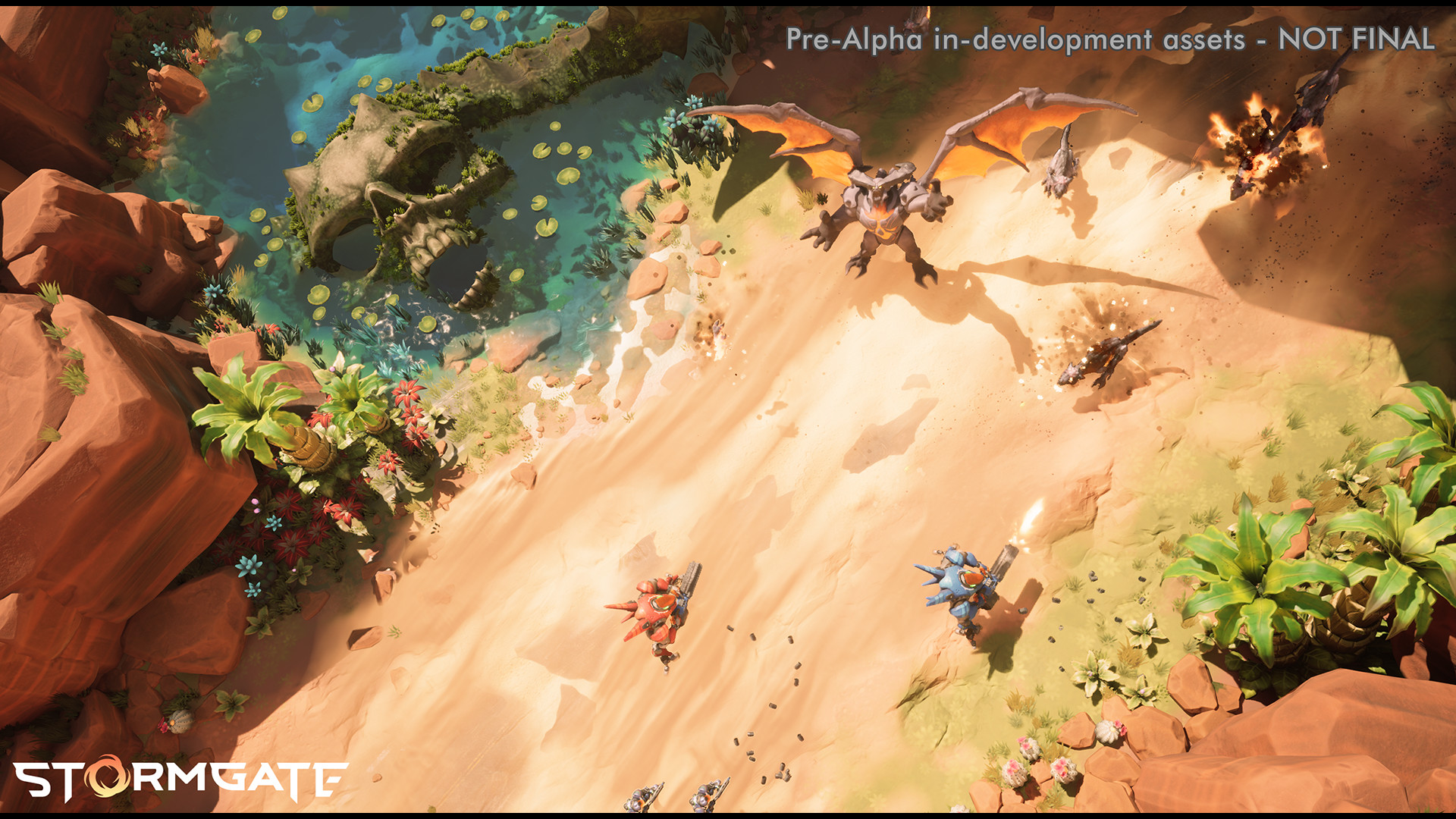
Stormgate is a bizarre science fantasy mash-up that’s set on Earth in the far future, but it also features demon hordes and actual magic. It’s like they couldn’t decide between being a Warcraft successor or a StarCraft successor, so they just did both. That’s a fine idea when applied to the gameplay, but not so much when it comes to the lore.
The presentation of the setting doesn’t help matters. The human faction’s workers are robots called B.O.B.s (you know, B.O.B. the builder), and they even feature a scout unit that is described in the game’s official documentation as “a robot dog with “frickin’ laser beam eyes.”
Blizzard’s games always had a bit of goofiness, but it was a background element. Stormgate has pulled a WildStar and gone all-in on the absurdity, and while some gamers might enjoy that, I am most definitely not one of them.
I also don’t see a lot gameplay innovation in Stormgate so far. It feels more like StarCraft 2.5, which isn’t a bad thing, but it could be doing more. I seem to recall hearing some rumblings that the unrevealed factions really shake up traditional RTS design, but so far we’ve seen none of that.
Stormgate will be free to play when it launches, which struck me as an odd choice. I think F2P is a good system for MMOs, but I’m not convinced it works for RTS games. After it went F2P, SC2 seemed to spend its time desperately flailing for something to monetize — lurching between skins, a battlepass-like system, and paid custom maps, among other things — before entering maintenance mode. But Stormgate is being made by people who would know best how well F2P worked for SC2, so maybe they know something I don’t.
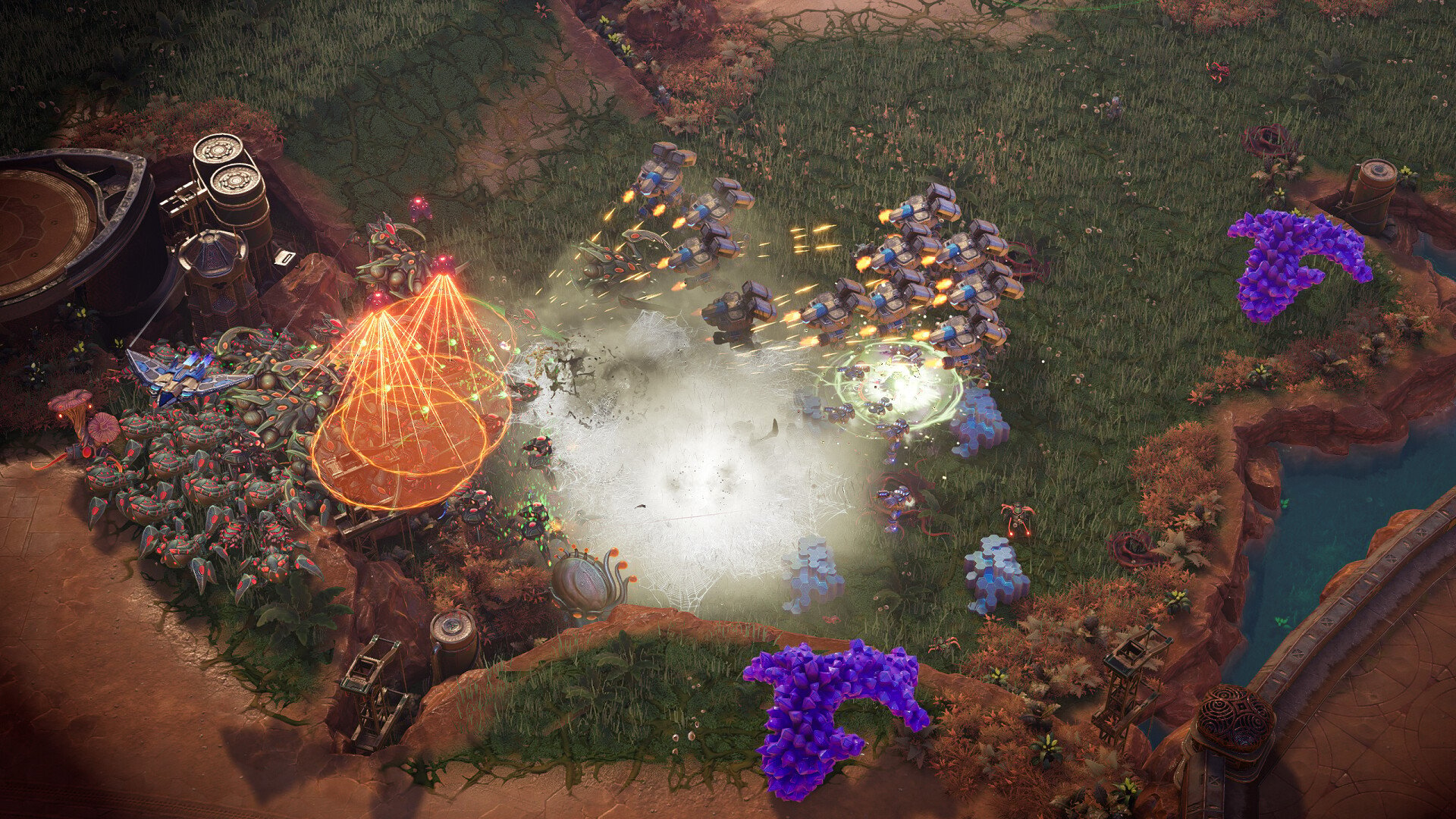
ZeroSpace
ZeroSpace recently wrapped up a successful Kickstarter campaign, earning over $500,000, after bursting onto the scene out of nowhere, led by a team of content creators and esports pros under the banner of Starlance Studios.
In contrast to Stormgate‘s relatively safe approach, ZeroSpace has perhaps the most ambitious features list of any RTS in history. Four primary playable factions, seven supplementary mercenary factions (the seventh unlocked as a stretch goal during the campaign), a campaign with Mass Effect-style choices and romances, co-op, PvP, and even an MMO-inspired persistent galaxy mode.
While the gameplay is clearly in the StarCraft mould, ZeroSpace feels like a bit less of a clone than Stormgate. The ability to mix and match mercenary and primary factions adds a whole new dimension to strategy, there’s an in-match faction leveling mechanic with both passive upgrades and global calldown abilities to unlock, and it will feature hero units in all modes (Stormgate limits them to team modes). Unlike the heroes of Warcraft III, these will be more like support units than one-person armies, which feels like a good compromise between more hero-based play and traditional RTS.
All this is appealing to me as an RTS fan, but I am worried that ZeroSpace is going to be too complex for the casual player. I would actually be glad to see the list of factions and features trimmed down a bit before launch.
ZeroSpace‘s will be buy-to-play at a price point to be determined, which strikes me as the safer choice for an RTS.
This all sounds like a dream come true, but you do know what they say about things that seem too good to be true. I’m always suspicious of Kickstarted video games, and doubly so when they promise the moon and more.
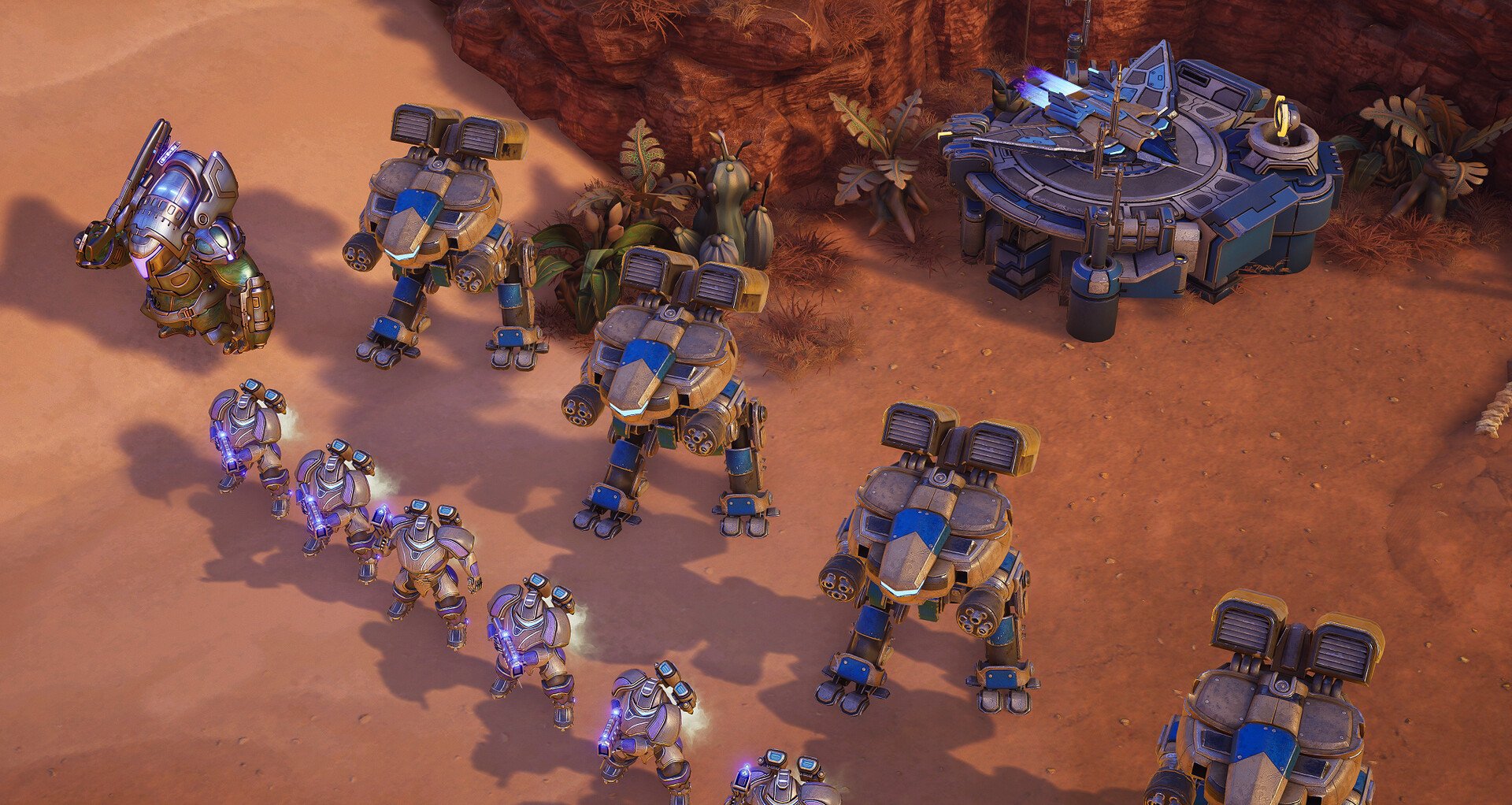
The involvement of so many familiar faces does give air of legitimacy, though. I was particularly impressed to see esports legend (and fellow Canadian) Sasha “Scarlett” Hostyn on the team as lead balance designer. She’s always been one of my favourite pros to watch, and while no one is immune to bad career decisions, the fact that she has faith in the project gives me hope.
Immortal: Gates of Pyre
This game somehow escaped my attention until recently. Produced by a team of experienced modders calling themselves Sunspear Games, Immortal: Gates of Pyre ran a successful Kickstarter in 2021, raising $150,000. Since then, development appears to have moved slowly, but it is still going, and a recent comment on reddit indicates the lack of news has been because the developers are choosing to wait until things are more finished before revealing them.
Like ZeroSpace, Immortal has an impressive features list, though not quite to the same extreme degree. It promises an eventual five playable factions, each with multiple variations based on your choice of Immortal. There’s also talk of adding further factions post-launch, which doesn’t feel like a realistic goal to me.
While they may sound like hero units, Immortals are more like the god choices of Age of Mythology or the commanders of StarCraft II co-op. Rather than participating in battle directly, each provides powerful global abilities, as well as slight variations on the core tech tree of their respective faction.
Immortal also sets itself apart with simplified economic mechanics that put a great emphasis on strategic decision-making and tactical control, as opposed to chore-like macro tasks. For instance, as in Godsworn, buildings are placed from a global menu, and workers automatically move to construct them, returning to resource-gathering when the structure is complete without the need for micro-management by the player.
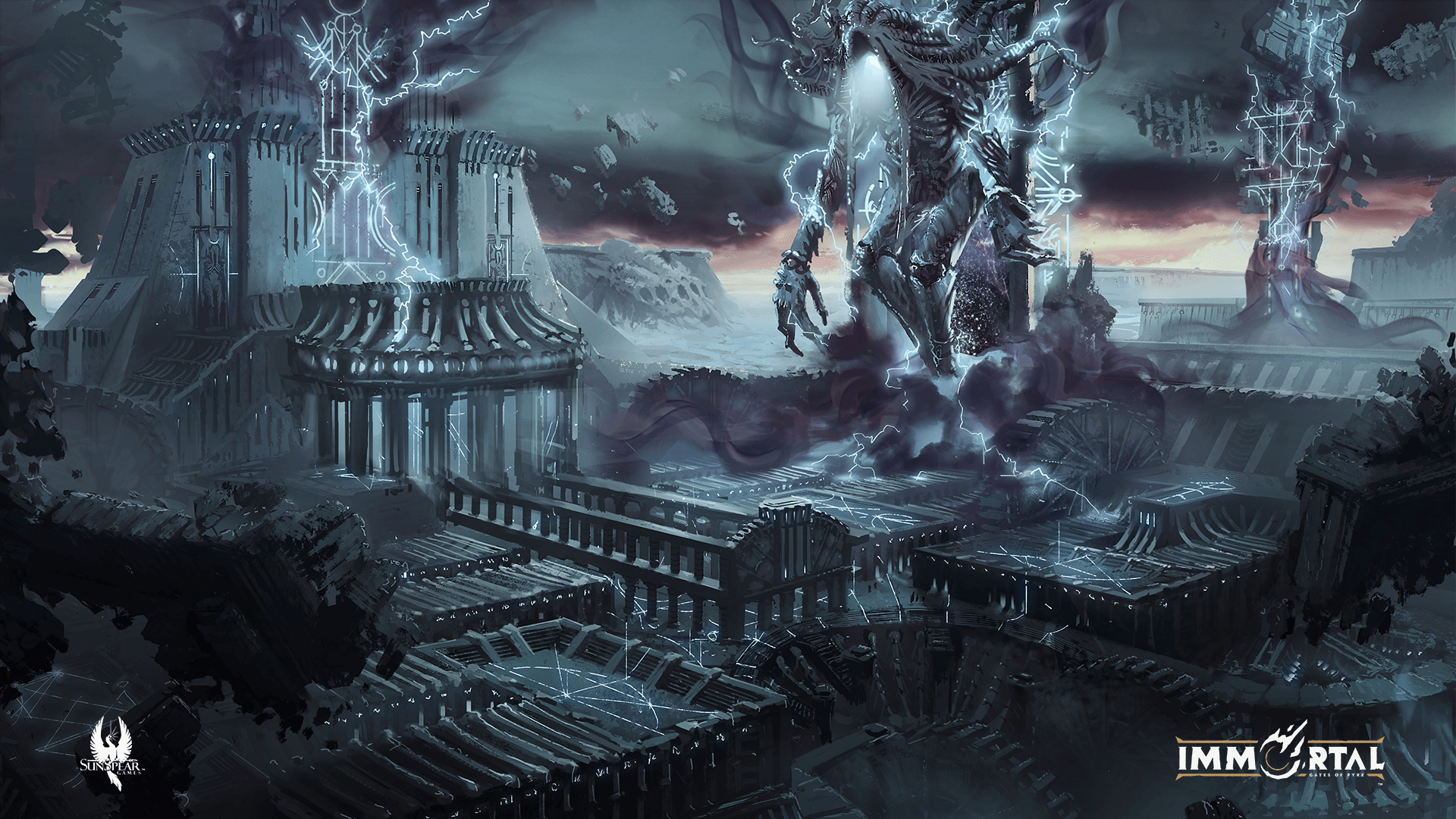
Like Stormgate, Immortal will be free-to-play, and it makes me as nervous for Immortal as it does for Stormgate.
What’s really struck me about Immortal is how unique its world-building seems to be. From what we’ve seen so far, it combines traditional fantasy with magitech and steampunk to create a science-fantasy world that is both far more exotic and far more cohesive than Stormgate‘s funky mishmash. It feels like Warcraft by way of Godfall.
While there isn’t a huge amount of detail on the game’s setting and story, what we’ve seen so far lends the impression that a great deal of effort has been put into the lore, and it immediately left me wanting more.
Whereas Stormgate feels like an attempt to remake StarCraft II, and ZeroSpace feels like an attempt to remix StarCraft II‘s formula with interesting new ideas, Immortal feels like a truly fresh game that learns from the lessons of StarCraft II while charting its own course.
Stormgate has the pedigree, and ZeroSpace has a staggering features list, but Immortal has that intangible cool factor that made me fall in love with the Blizzard RTS titles of old. I already know I want to main Q’Rath and smash my enemies with battalions of magitech angelic swordsmen.
For that reason more than any other, of the games I’ve discussed today, Immortal is the one I most find myself most drawn to. If past history is any guide, that means it’s the most likely to flop. But I’ll hold out hope anyway.
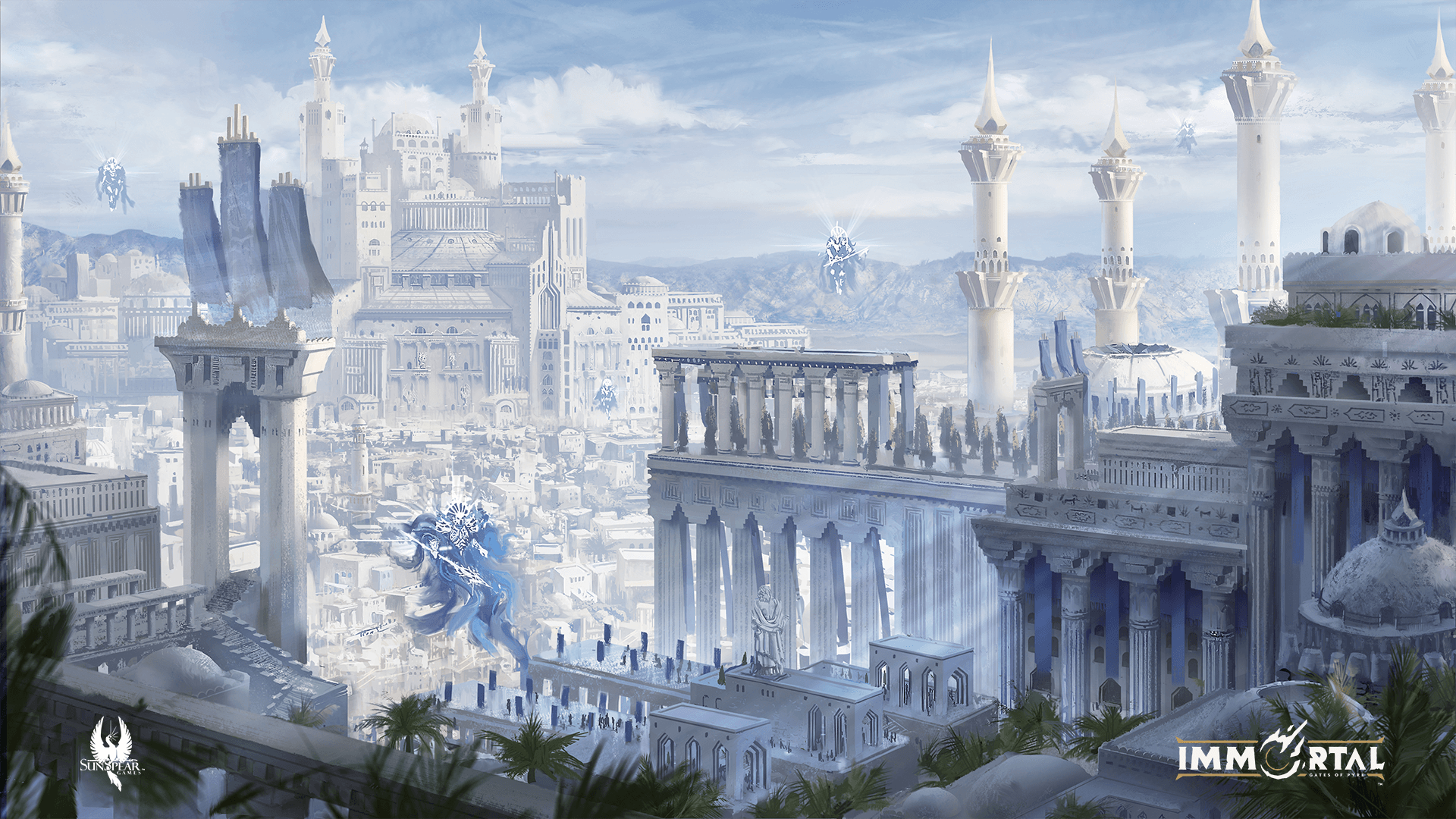
To be clear, though, all of these games have the potential to be amazing if they can deliver on their promises. I cheer for the RTS genre as a whole, and I would like to see all of these turn out to be fun, successful games.
 The world of online gaming is changing. As the gray area between single-player and MMO becomes ever wider, Massively OP’s Tyler Edwards delves into this new and expanding frontier biweekly in Not So Massively, our column on battle royales, OARPGs, looter-shooters, and other multiplayer online titles that aren’t quite MMORPGs.
The world of online gaming is changing. As the gray area between single-player and MMO becomes ever wider, Massively OP’s Tyler Edwards delves into this new and expanding frontier biweekly in Not So Massively, our column on battle royales, OARPGs, looter-shooters, and other multiplayer online titles that aren’t quite MMORPGs.
